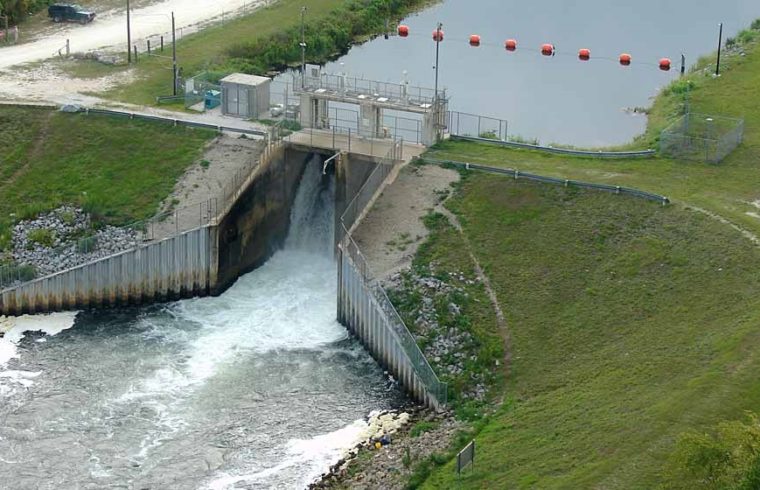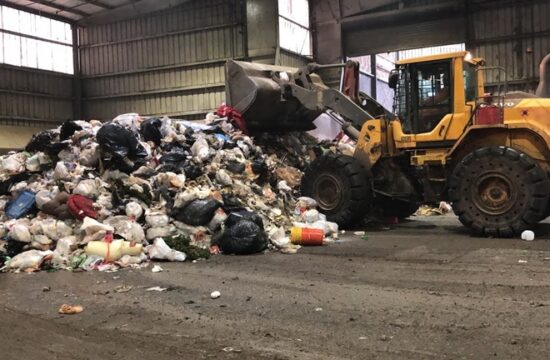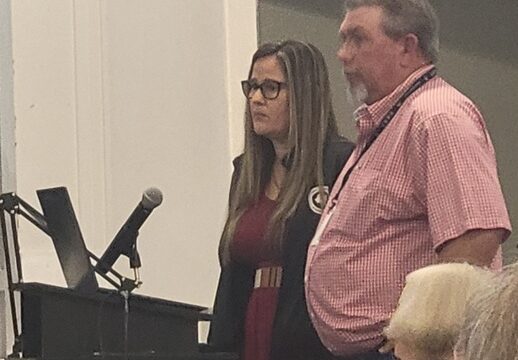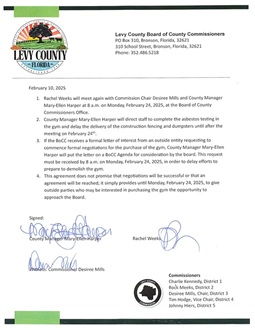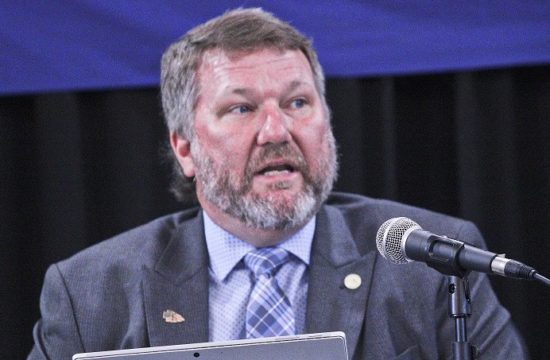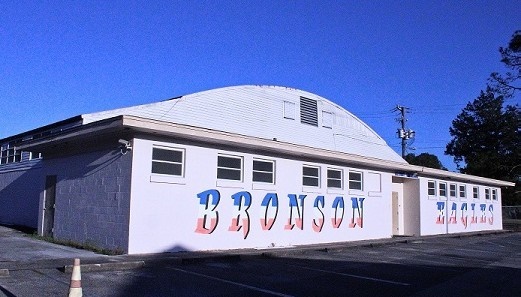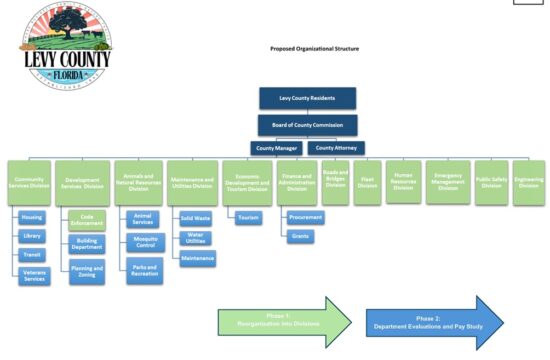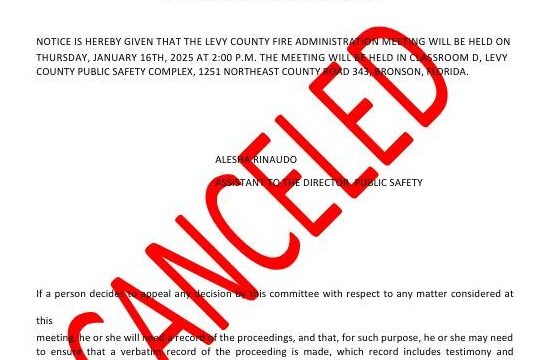By Terry Witt – Spotlight Senior Reporter
Levy County Commissioners have passed a resolution requesting federal and state action and funding to restore water quality to the Lower Withlacoochee River by improving the two dams on Lake Rousseau and making other adjustments to connected water control structures.
Commissioner John Meeks spoke for the board when he made it clear the board would distance itself from any effort to remove the Inglis Dam that created Lake Rousseau or to restore the original flow of the Withlacoochee River before the dam was built more than 100 years ago.
“It’s not about changing the way Lake Rousseau looks. It’s about upgrading the quality of water of Lake Rousseau which then affects the Lower Withlachoochee River,” Meeks said.
Dan Hilliard, a member of Withlacoochee Area Residents, Inc. or W.A.R, the citizens’ organization that contracted with Wetlands Solution, Inc. to do a three-year study of the lower river and make recommendations on how to improve water quality, said Meeks was spot-on with his comment.
“That’s precisely correct. We have never had any discussion about doing away with the structures or restoring it to what it was 150 years ago. We’re looking at a very specific focus on the Lower Withlacoochee River,” Hilliard said.
The Inglis Dam in southwest Levy County was built in 1909 to impound a reservoir of water for transport of commercial timber, phosphate, and citrus, according to the study. The stump-filled reservoir is known as Lake Rousseau, a bass fishing hotspot in the modern era. The dam was used for electric power generation by Florida Power Corp. until 1965.
The Withlacoochee River is estimated to be 157 miles long. It begins in the Green Swamp in northern Polk County and winds its way toward the Gulf of Mexico passing by Yankeetown and Inglis. The last 10 miles of the river is known as the Lower Withlacoochee River.
A water control structure that was built on one side of Lake Rousseau, known as the Inglis Bypass Spillway, a small dam, provides water to the Lower Withlacoochee River from the lake, but the study said not enough water is flowing through the spillway for a healthy river environment. The study recommends modifying the structure to increase flow.
The Cross Florida Barge Canal, built in the 1960s, bisected the lower river and diverted water to the Inglis Lock structures and Gulf of Mexico. The canal was decommissioned in the 1990s. The study said the Inglis Dam, the barge canal, and Inglis Locks have altered the biology and chemistry of the river and helped degrade it.
Herbicides sprayed on aquatic plants in Lake Rousseau have contributed to the ailing Lower Withlacoochee River. Whether the herbicides were partly to blame or entirely to blame, the study said herbicide residues flowing from Lake Rousseau through the spillway are damaging the river.
In the 1970s, scientists found aquatic plants that included hydrilla, milfoil, jade grass, coontail, southern naiad, and widgeon grass. Floating aquatic plants included butter hyacinth, water lettuce, and duckweed, the study said.
After the turn of the century, the bottom of the Lower Withlacoochee was barren of plant life. No submerged aquatic plants were observed in the Lower Withlacoochee River segment below the Inglis Spillway, according to a 2013 report.
One recommendation in the Wetlands Aquatic Solutions, Inc. report from 2021 would be to limit the use of weed-killing herbicides across the entire lake and eliminate spraying within close proximity to outflow structures to reduce “downstream acute and chronic impacts.”
The study also recommends eliminating septic tanks along the Lower Withlacoochee and throughout the Withlacoochee River Watershed to reduce pollutants flowing into Lake Rousseau and the Lower Withlacoochee River.
There are numerous other recommendations in the study. For those with an interest in the Lower Withlacoochee River, Lake Rousseau, the barge canal, and locks, the entire report compiled by Wetland Solutions, Inc. can be found on the W.A.R. sponsored website at https://www.warinconline.com/index.php.
The county commission resolution, adopted at the May 16 meeting, said the state has classified the Lower Withlacoochee River as an Outstanding Florida Waterbody and designated it a Special Water of exceptional recreational and ecological significance worthy of the highest level of protection.
“The Lower Withlachoochee River has seen significant degradation and impairment due in large part to inadequate design and function of Lake Rousseau containment structures as documented in a multi-year water quality monitoring and environmental assessment study and final report dated July 21 prepared by the environmental consulting and engineering firm of Wetlands Solutions, Inc. for the non-profit organization W.A.R, Inc. doing business as Withlacoochee Aquatic Restoration,” the resolution states.
“The County requests Federal and State Legislative action to direct and fund improvements to the Lake Rousseau containment structures and other projects necessary to restore the Lower Withlacoochee River.”
“The County Coordinator is directed to forward a copy of this resolution to Governor Ron DeSantis, Florida Senator Jennifer Bradley, Florida Representative Joe Harding, U.S. Senators Marco Rubio and Rick Scott, U.S. Representative Neal Dunn, Executive Director of the Southwest Florida Water Management District Brian Armstrong, Florida Department of Environmental Protection Secretary Shawn Hamilton, Inglis Mayor Michael White, Yankeetown Mayor Eric Erkel and Citrus County Administrator Randy Oliver.”
The study by Wetlands Solutions was funded by a number of sources.
Phase 1 of the study was funded by the Felburn Foundation. Phase 2 was funded by the towns of Inglis and Yankeetown and members of W.A.R, Inc., and Phase 2 supplemental monitoring was funded by Duke Energy, Drummond Community Bank, and members of W.A.R., Inc. Phase 3 was funded by members of W.A.R., Inc.
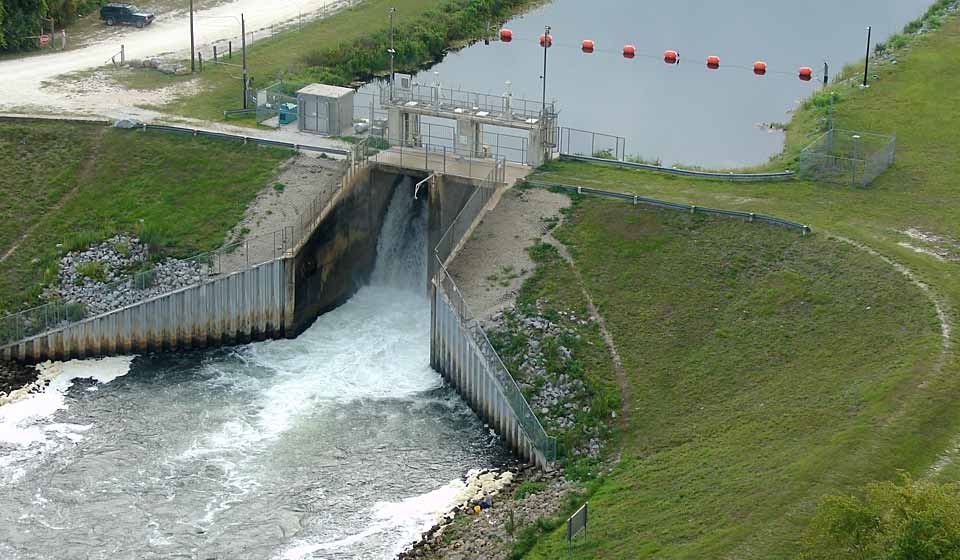
————————
Board of County Commission Regular Meeting May 17, 2022; Posted May 27, 2022


